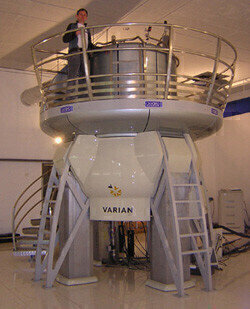News & Views
The Fascinating History of NMR
Aug 17 2014
Nuclear magnetic resonance, better known as NMR, is the phenomenon whereby nuclei can absorb and emit electromagnetic radiation. This occurs when the frequency of the specific isotopes of the nuclei and that of the magnetic field in which it is placed are in harmony, or, for a more commonly used term, in resonance.
The discovery of such a phenomenon can be traced back almost a complete century, to the very beginnings of quantum theory as proposed by Niels Bohr in the 1920s. Such a theory sought to account for the abnormalities in the absorption and emission of certain particles, though it was a long way from clarifying the issue completely.
Humble Beginnings
At the beginning of that decade, the German physicists Otto Stern and Walther Gerlach worked together on what became known as the Stern-Gerlach experiment, an important breakthrough in the field. The experiment involved passing a beam of molecules through a magnetic field and monitoring how they were affected. Their innovation in the field earned Stern recognition in the form of the 1933 Nobel Peace Prize for Physics.
1938, Polish-American physicist Isidor Rabi extended the experiment by introducing a smaller oscillating magnetic field to the initial field at right angles. When the frequencies of the two fields coincided, resonance occurred, and the first instance of nuclear magnetic resonance was observed in the form of decreasing beam intensity. Rabi was later awarded the Nobel Prize for Physics in 1944 for his work.
These foundations were built upon by Felix Bloch and Edward Mills Purcell by adapting the technique to incorporate liquids and solids, and the pair were awarded the Nobel Prize for Physics in 1952. The latter scientist also worked closely with Robert Pound and Henry Torrey in using the technique on bulk quantities of solids.
Introducing the Varian A-60 NMR spectrometer
All of these scientists were instrumental in discovering that the technique of NMR could be used to analyse molecules for their chemical and structural makeup. Accordingly, in 1961, the first commercial NMR spectrometer – the Varian A-60 – was introduced by James Schoolery and was found to give reproducible results, a major breakthrough in the discipline.
The evolution of spectrometers continued steadily throughout the 20th century, becoming ever more precise and sophisticated in their construction and abilities. This year, the world's first phosphorus-31 capable benchtop NMR spectroscopy system was announced, which incorporates proton-phosphorus into its capabilities and allows for a large chemical shift range.
Such spectrometers are used for a wide range of applications in the fields of medicine, chemistry, purity determination, petroleum data acquisition, and many others. For an example of its use, read the article: NMR System used for Fuel Analysis Research at the Instituto de Quimica. The article talks how about this Brazilian institute is attempting to use NMR to analyse diesel and gasoline, with a view to increasing efficiency whilst reducing expense.
Image Source
Digital Edition
Lab Asia 31.2 April 2024
April 2024
In This Edition Chromatography Articles - Approaches to troubleshooting an SPE method for the analysis of oligonucleotides (pt i) - High-precision liquid flow processes demand full fluidic c...
View all digital editions
Events
Apr 22 2024 Marrakech, Morroco
Making Pharmaceuticals Exhibition & Conference
Apr 23 2024 Coventry, UK
Apr 23 2024 Kintex, South Korea
Apr 23 2024 Seoul, South Korea
Apr 24 2024 Jakarta, Indonesia













.jpg)




